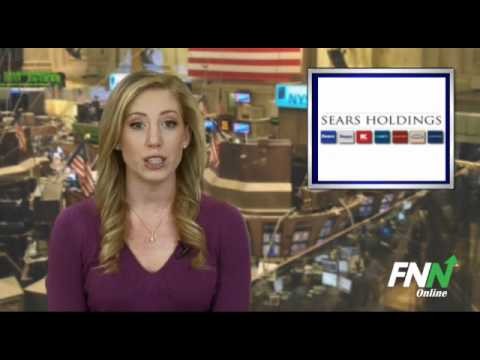Pros And Cons Of Investing In Sears Holdings Sears Holdings Corporation (NASDAQ SHLD)
Post on: 2 Октябрь, 2015 No Comment

Introduction
There are different reasons for and against buying Sears Holdings (NASDAQ:SHLD ) common stock. Some of the positive things going on for Sears are that it has a solid investor base in the face of ESL Investments and Fairholme Capital Management, a well established appliance business that the company is spinning off this week, a strong presence in automotive service, and it also owns Land’s End, a well known online merchant. On the negative side, Sears stock is expensive and difficult to value since the company is undergoing a number of restructurings, it is losing market share and money, and its long-term survival is questionable. The article below will discuss some of the pros and cons of owning Sears common stock.
Valuation (negative)
Sears has a market capitalization of about $5.6 billion compared to $41.9 billion for Target (NYSE:TGT ), $42 billion for Wal-Mart (NYSE:WMT ), and $85.5 billion for Home Depot (NYSE:HD ). Clearly, Sears is the smallest company among the major brick and mortar U.S. retailers. In addition, the company has a disproportionately large amount of current assets as compared to current liabilities. Its quick ratio (current assets/current liabilities), which measures short-term liquidity, is less than one at 0.18, trailing that of Target (0.65), Wal-Mart (0.23), and Home Depot (0.47).
While Sears short-term liquidity is in question, the company also has a negative price to earnings ratio due to its inability to produce profit in 2011 and during the first six months of 2012. Target, Wal-Mart, and Home Depot have price to earnings ratios of 14.7, 15.3, and 20.3, respectively. Sears is expected to generate net losses at least through 2014. Based on enterprise value to earnings before tax, depreciation, and amortization (EBITDA) Sears also has the highest valuation at 17.6 times compared to 7.9 times for Target, 8.2 times for Wal-Mart, and 10.5 times for Home Depot.
Finally, based on a tangible book value to price, Sears common stock is significantly overvalued. Its price to tangible book value is the highest in the group at 8.15, compared to 2.64, 4.89, and 5.19 for Target, Wal-Mart, and Home Depot, respectively. If there is a clear measure of the company’s value, this is its book value and Sears price to book value ratio is not favorable. A recent article in Barron’s, which reads more like a good PR for ESL, defends the hidden value of Sears. However, Wall Street analysts are already questioning the company’s survival and the above analysis shows that they might be right.
Spin-Off of Sears Hometown (short-term positive)
On September 7, 2012, shareholders of Sears will receive the right to purchase a share of Sears Hometown (NASDAQ:SHOS ) for each share of Sears they hold in exchange for $15. The offering is expected to raise about $465 million for Sears Holdings and the rights will be traded on the NASDAQ stock exchange under the symbol SHOSR. The spin-off of the appliance business seems like a financial engineering with questionable results and it may be a short-term positive for Sears Holdings balance sheet (see this article explaining rights).
The rights offering’s purpose is to raise liquidity for Sears Holdings, however, shareholders of Sears could be as well throwing good money after bad. According to disclosures. Sears Hometown generated $2.3 billion of sales in fiscal 2011 or 5.8% of Sears Holdings sales. However, it had a positive operating margin of 2.3% compared to an operating loss for Sears Holdings as a whole. Following this separation, it is likely that Sears Holdings results will worsen since it is s pinning of f a more profitable businesses, which is also facing headwinds. While, Sears Holdings will receive some liquidity from the spin-off, overall, this appears to be a short-term positive. Shareholders who are asked to participate in the rights offering should use caution as this is in contrast to Target, Wal-Mart and Home Depot, who have not tapped the public markets to raise cash and instead all return money to shareholders by paying dividends.
Automotive Business and Services (positive)
The automotive business appears to be the only light in the tunnel for Sears Holdings. Tire Business ranks Sears Automotive as the fifth largest tire and automotive services provider in the country. In fact the Automotive business has grown in 2010 compared to 2009, according to the few details provided in Sears annual report about this business. The case for Sears Automotive is further strengthened by a recent ad campaign the company launched nationally.
There are more opportunities in the services business. For example, Sears could launch a car rental program from its locations. In addition it could offer a bicycle repair service in addition to selling bikes, as well as a number of other services similar to the ones offered by retailers such as REI, Home Depot, and Best Buy (NYSE:BBY ). For example, Home Depot recorded a growth in its service revenues of 11.5% from 2009 to 2011. Clearly, a broader focus on services and rentals could boost Sears value.

Decreasing Market Share (negative)
Sears recorded a sales decline of 4.75% on average for the past five years. Target and Wal-Mart had average annual 5-year sales growth rates of 3.27% and 5.11%, respectively, with only Home Depot, similar to but better than Sears, recording a decline of 2.29%. Even Sears’ crown jewel, its appliance business, registered a 3% decline in 2011 sales from 2010 levels according to the consumer electronics research web site twice.com. For the same period, appliance sales in the U.S. declined by 0.1%. However, Sears was able to maintain its number one position with appliance sales of $7.28 billion in 2011 or about 30% of the market. With a large number of store closings and division spin-offs, it appears unlikely that Sears will be able to gain market share once the economy recovers.
Conclusion
At this point, the number of things on the negative list appears to outnumber those on the positive one. With the economy still uncertain and a corporate strategy that is nothing more than split and sell, Sears Holdings is a questionable investment. No matter what, ESL Investment and Fairholme Capital Management, by earning solid management fees, will continue to benefit from being Sears largest shareholders. Collectively, these two institutions hold about 60 million Sears shares or over $3 billion. The Fairholme Fund appears to have become a large shareholder between August 31, 2007 when the Fund owned 1.9 million shares and August 31, 2008, when the shares it owns rose to 12.2 million. During this period, Sears traded between $70 and $140 per share or significantly higher than the current stock price. Fairholme and its well-known portfolio manager, Bruce Berkowitz, are still holding on to over 15 million Sears shares, which could be the largest positive going on for Sears at this time. Despite support from institutional investors, without a clear vision for where the company is headed, it is hard to see it can survive in its current setup.
Disclosure: I have no positions in any stocks mentioned, and no plans to initiate any positions within the next 72 hours. I wrote this article myself, and it expresses my own opinions. I am not receiving compensation for it (other than from Seeking Alpha). I have no business relationship with any company whose stock is mentioned in this article.
Since you’ve shown interest in SHLD, you may also be interested in














